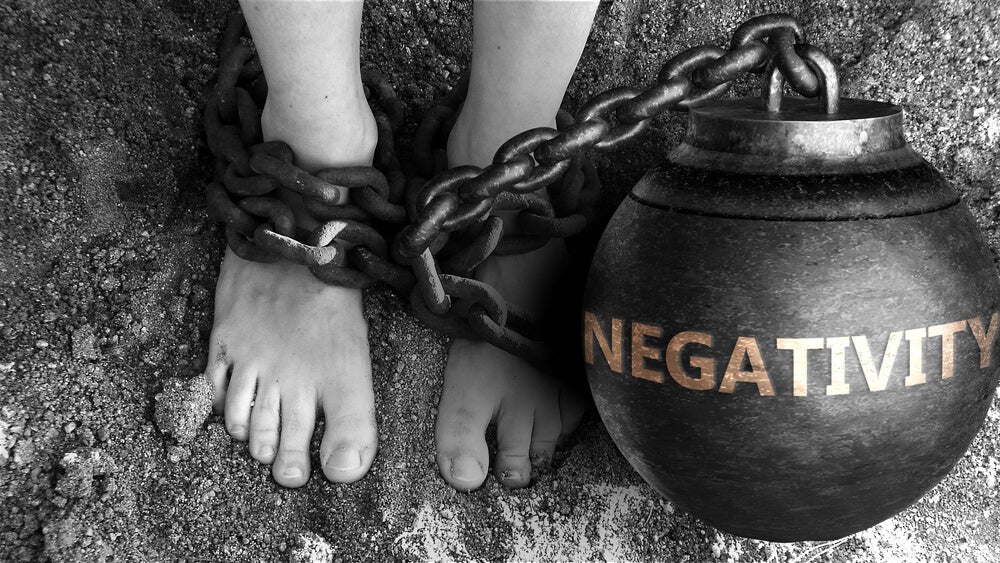Humans tend to think about what went wrong instead of thinking about what worked; therefore, our pleasant and positive memories can be tainted by simple unpleasant encounters. This is what the bias of negativity refers to. Specifically, the value we give to the negative.
It is the bias that explains why traumatic and negative experiences remain longer in our memory and seem to affect us more than positive ones.
- It seems that these more or less unpleasant experiences tend to intensify in our thinking.
- Let’s go a little further.
On many occasions, bad news has much more impact than good news, and criticism can affect us far more than praise.
In The Brain of Buddha, neuroscientist Rick Hanson proposes to give an explanation, which has been supported by many other researchers, about the origin of the evolutionary nature of negativity bias.
According to Hanson, the bias of negativity is a consequence of the evolution with which our ancestors learned to make intelligent decisions in high-risk situations.
These kinds of decisions have allowed them to survive long enough to secure the next generation. After all, they were matters of life and death.
As a result, people living at the forefront of potential dangerous events were more likely to survive. Over time, the structure of the brain has adapted very slowly to pay more attention to negative than positive information.
The various research seems to coincide with the idea that this bias of negativity develops in early childhood, and around the first year of life, babies’ attention, which initially focused on facial expressions, begins to focus on negative stimuli.
In studies conducted by psychologist John Cacioppo on the neural processing of negativity bias, it was possible to demonstrate that the brain’s response to sensory, cognitive and negative motor stimuli causes much greater activation than positive events. This happens especially in the cerebral cortex.
From the precedent, today, this bias of negativity promotes and influences the fact that we focus on the negative that surrounds us, even when making a decision.
It also seems to have a great influence on the motivation to perform a task, it is curious that a task that requires avoiding a negative experience motivates us much more than when performing a task can reward us with a positive incentive.
In turn, the evolutionary approach suggests that this is just a trend we seek to avoid damage caused by negative situations, it’s just one way our brains try to keep us safe and protected.
Although it seems that this bias of negativity has helped us survive as a species, the truth is that it causes very undesirable effects on our daily lives that we should at least know.
In addition to affecting our decision-making and understanding of the risks we are willing to take, this bias seems to have a big impact on the way we perceive others, which in the nearest relationships can lead us to think and expect the worst from us. Other.
The bias of negativity has consequences as disparate as those that make us more likely to give more credibility to negative than positive news.
This type of information not only attracts much more attention, but also receives more credibility, even if it is false.
This bias also affects our values and ideologies, and seems to be intimately linked to the tendency to stick to traditions and security in the face of ambiguous stimuli and changes that can be considered threatening.
As you can see, it is best to think about what our trend is in most situations and be aware of the presence of negativity biases. We must do this mainly if we want our decisions to be as appropriate as possible.

